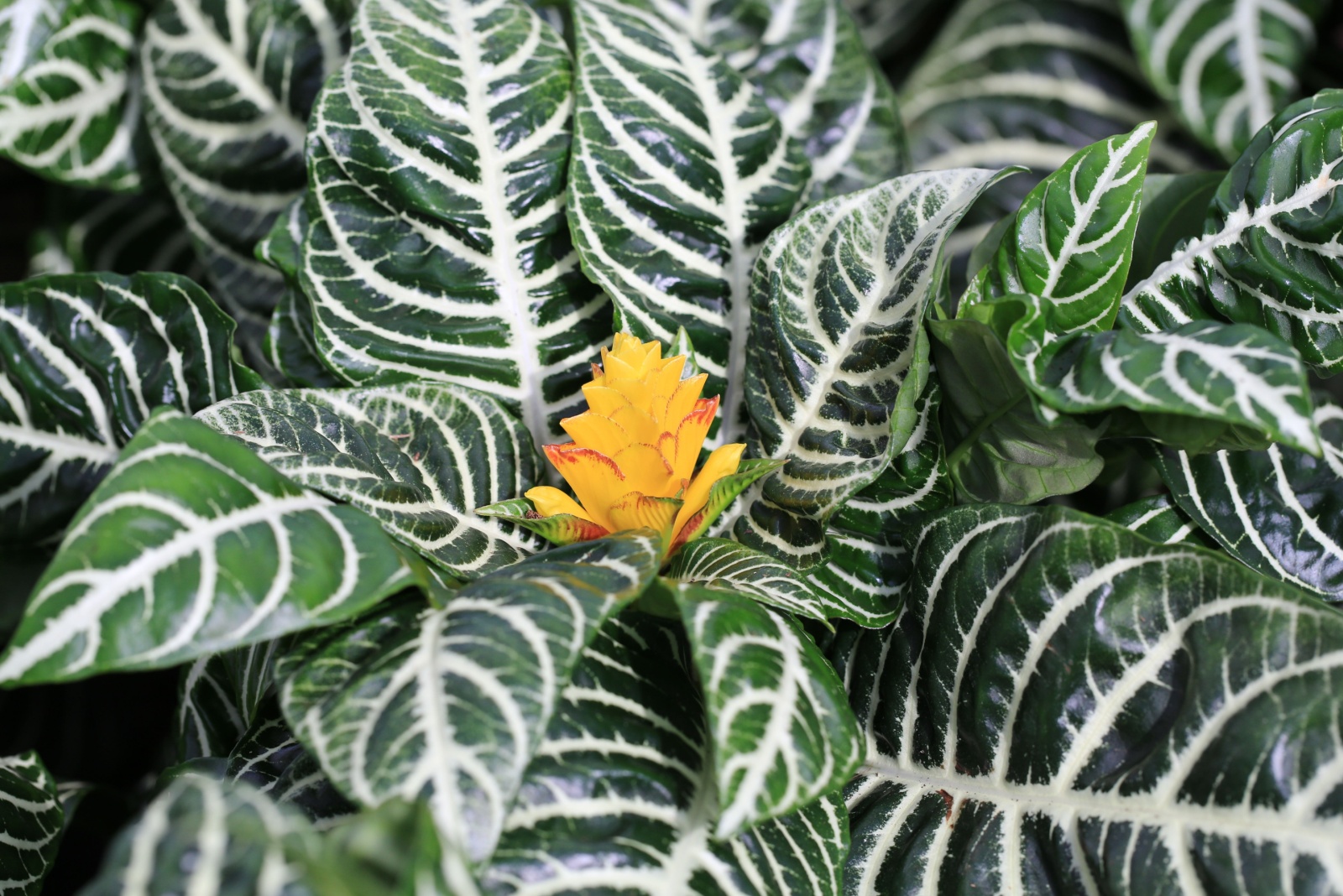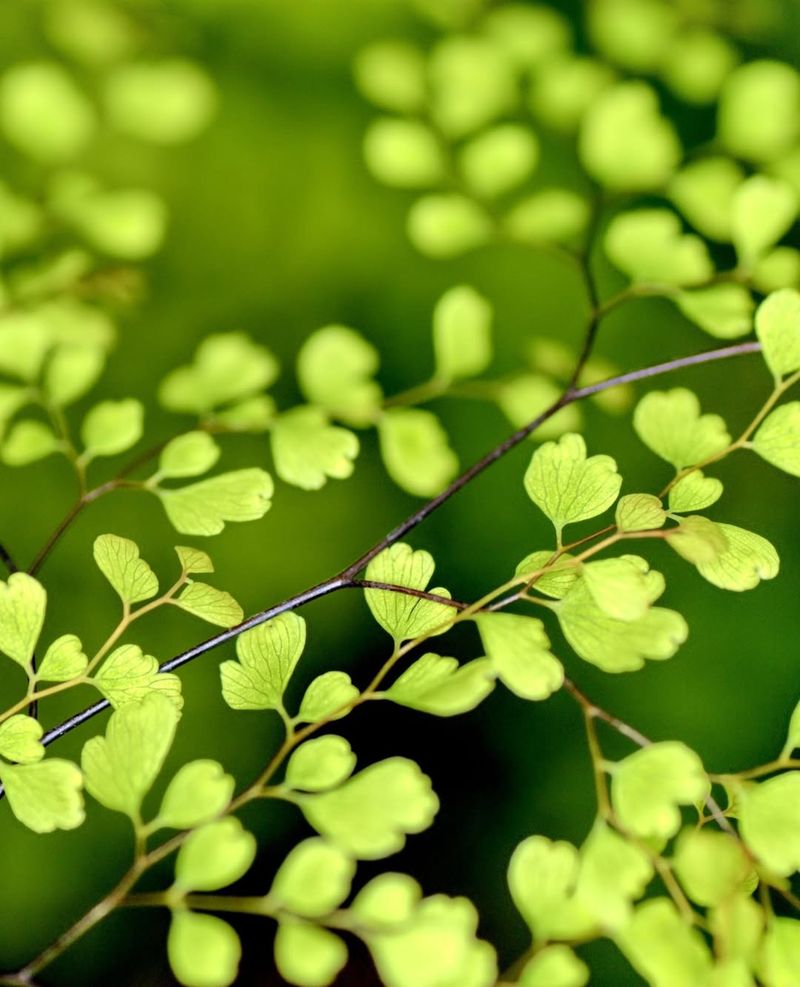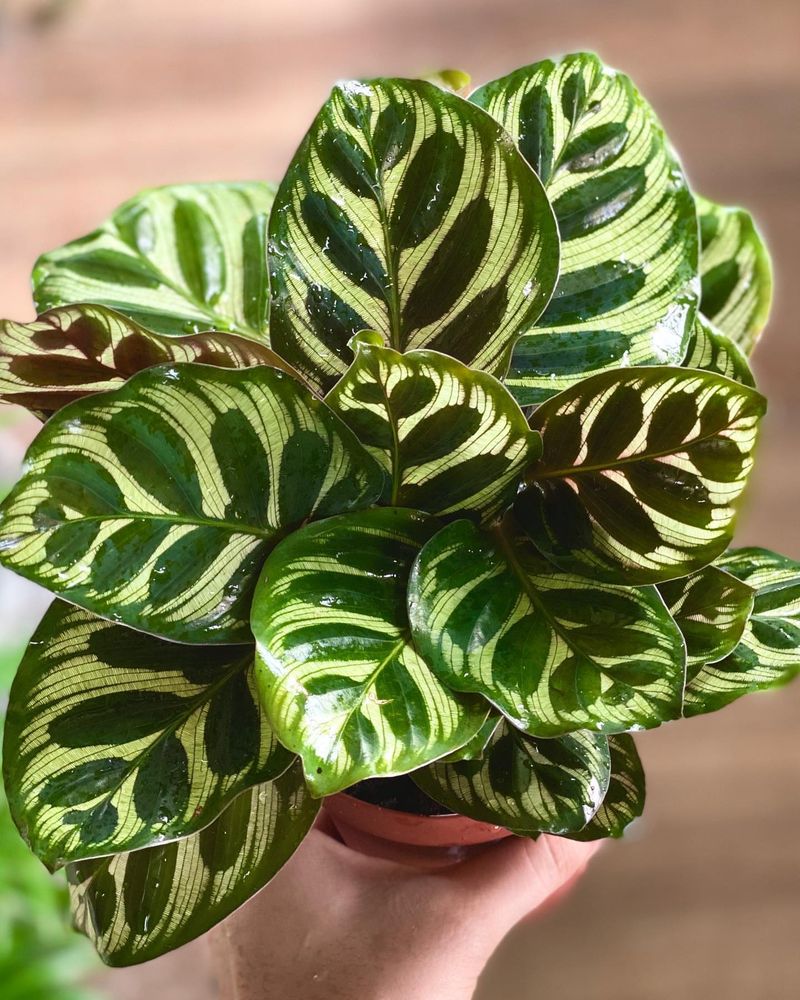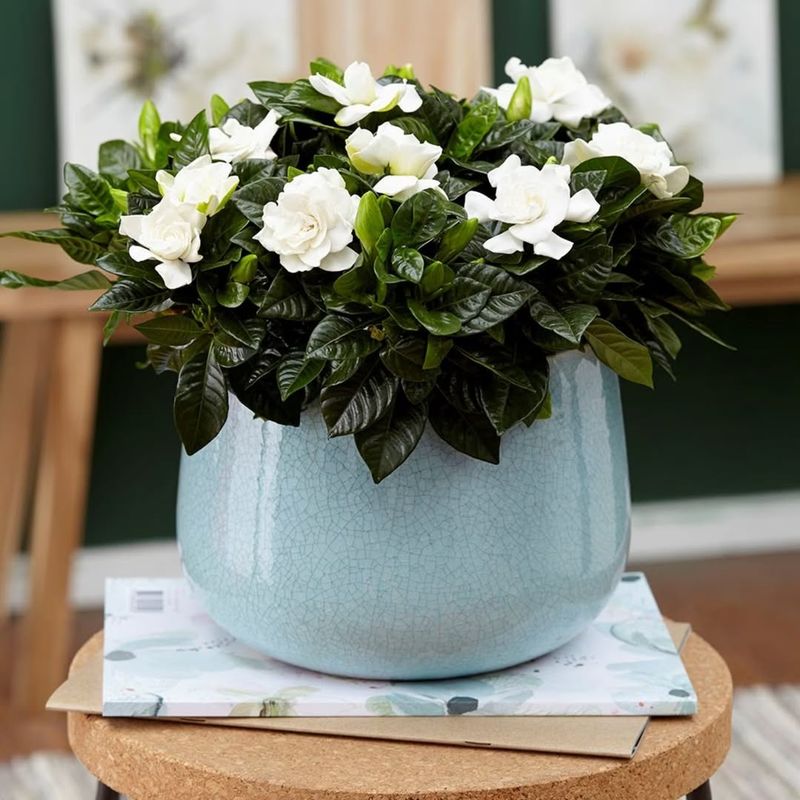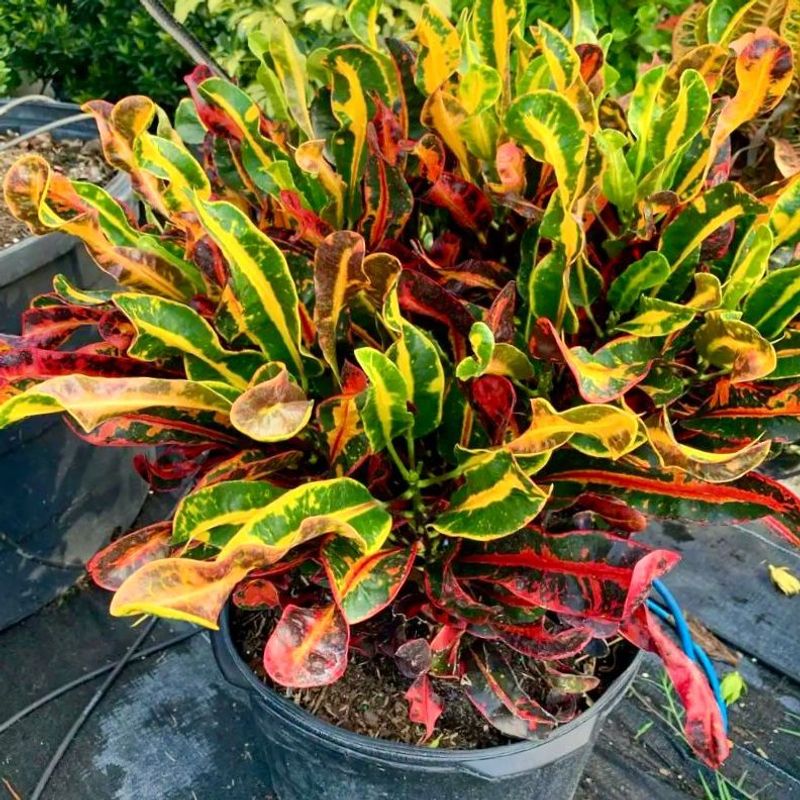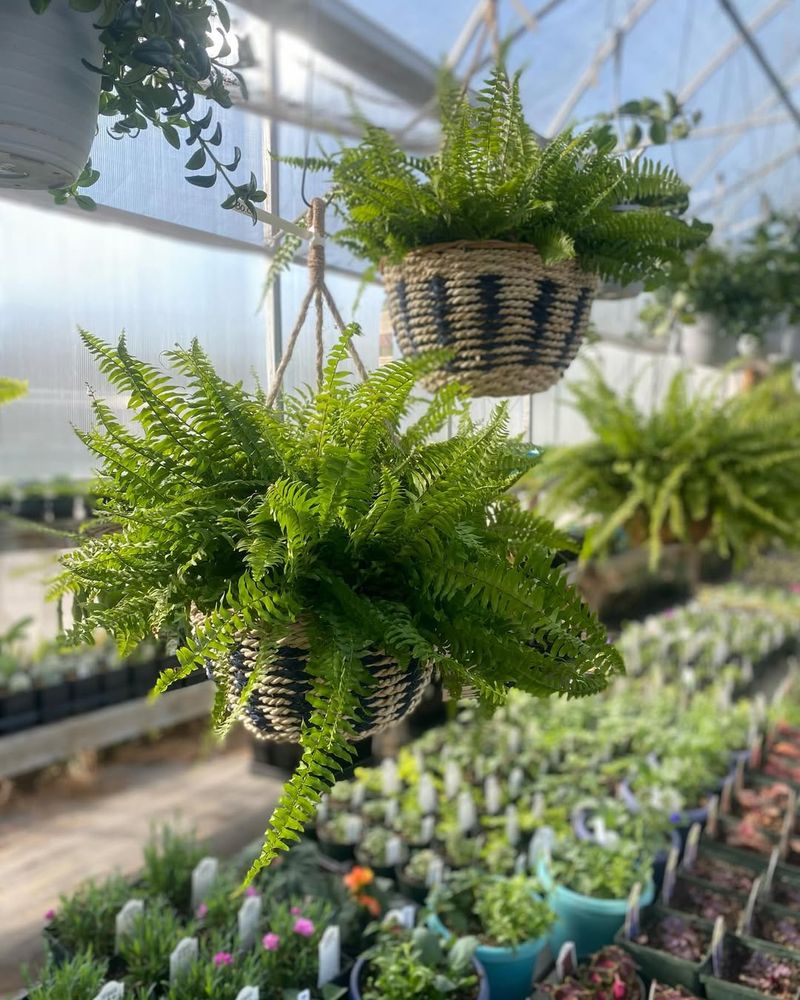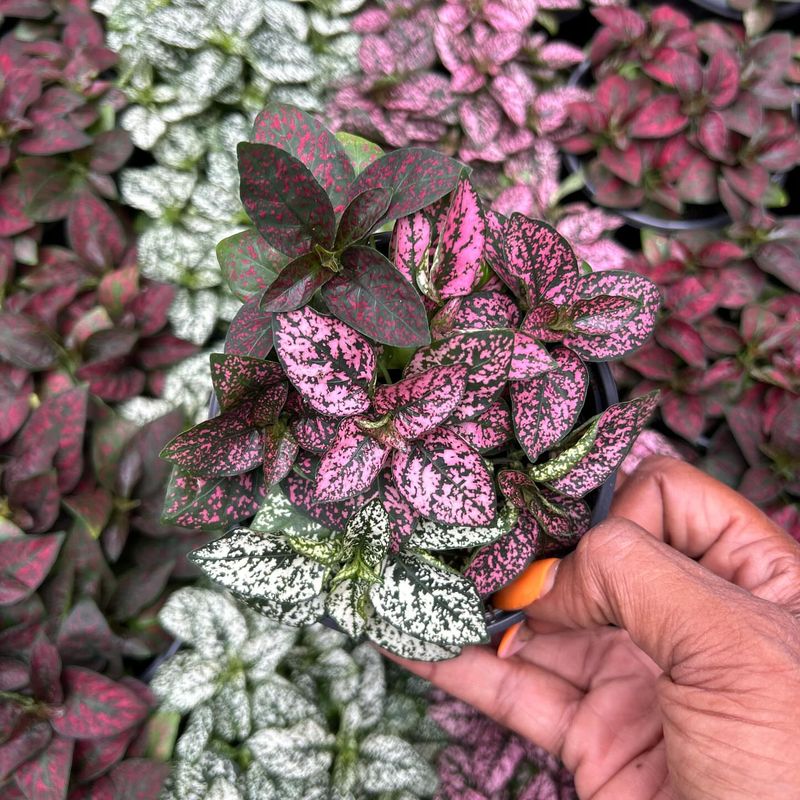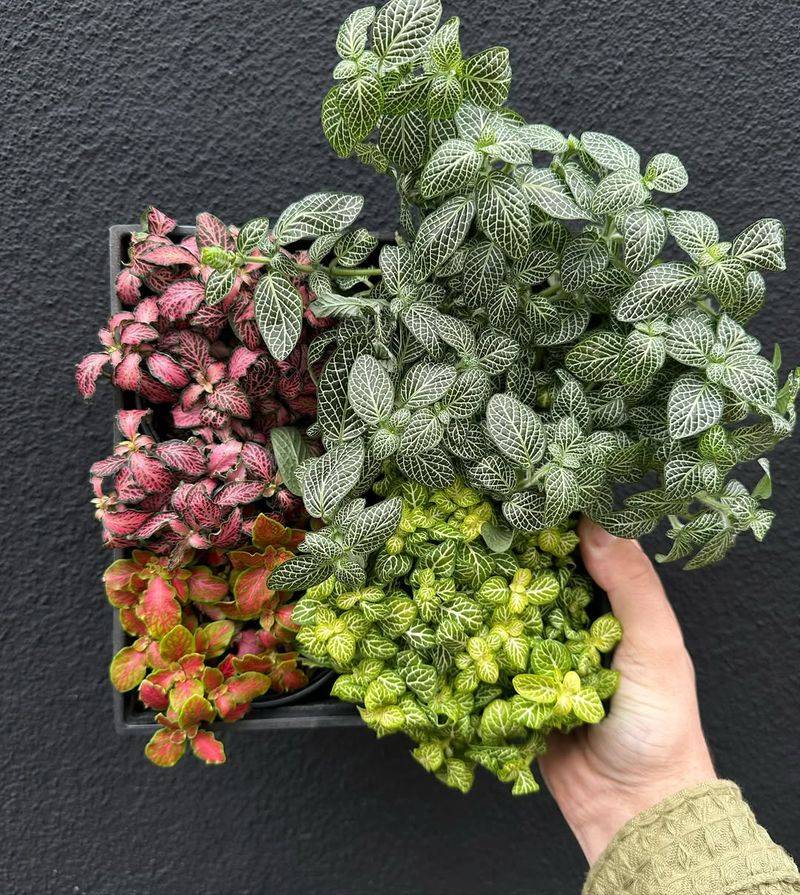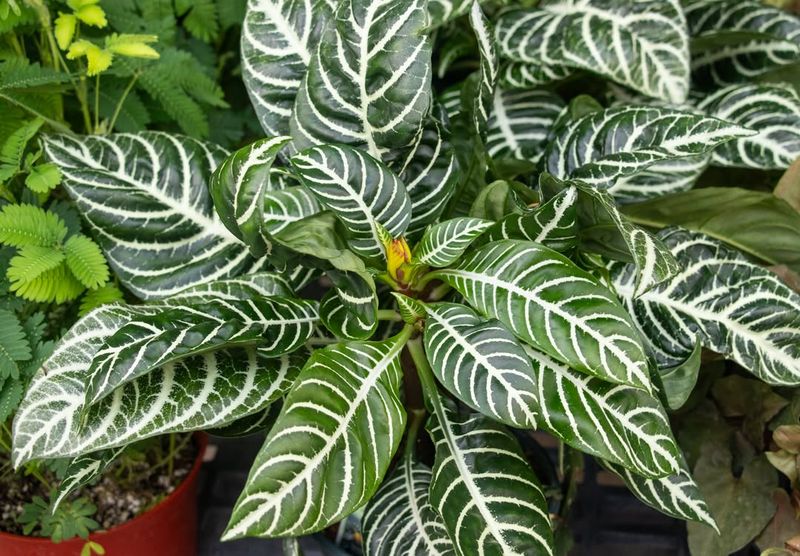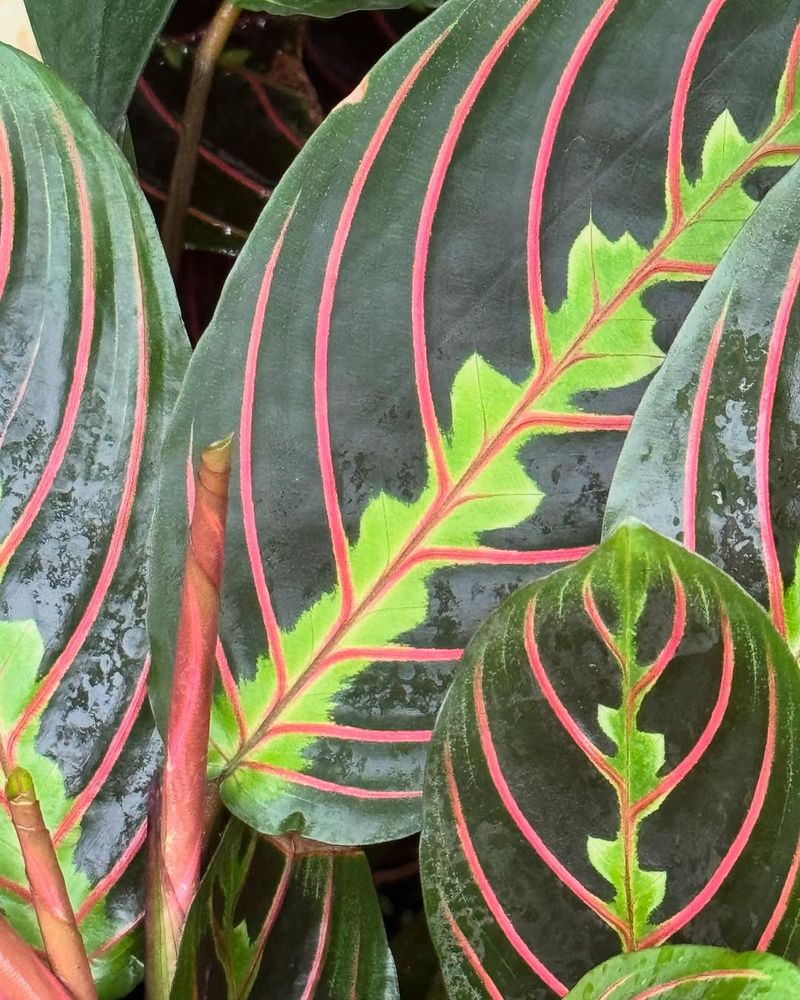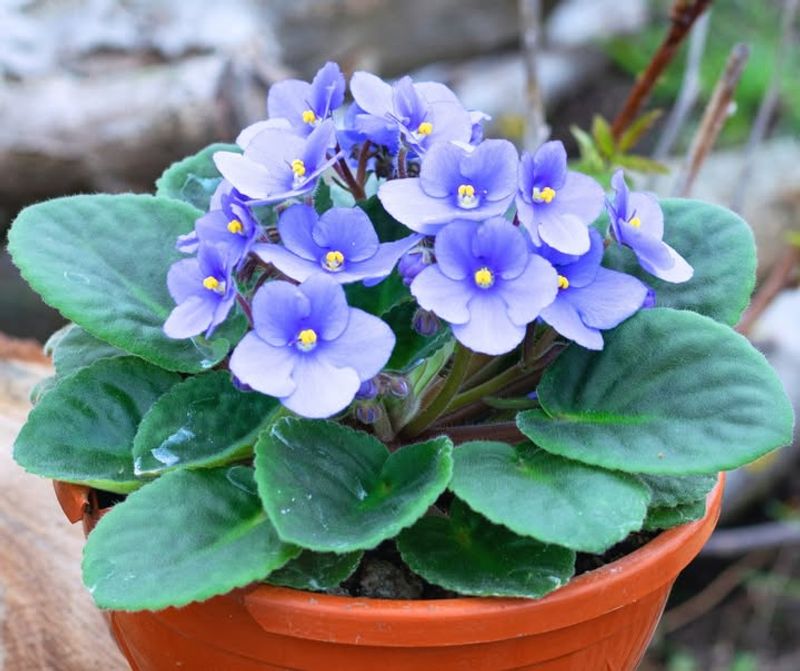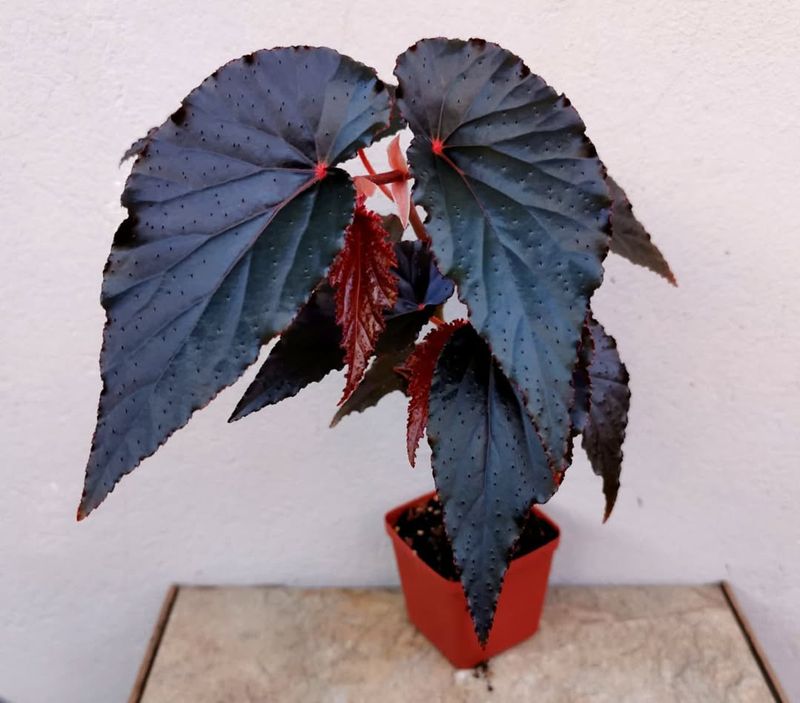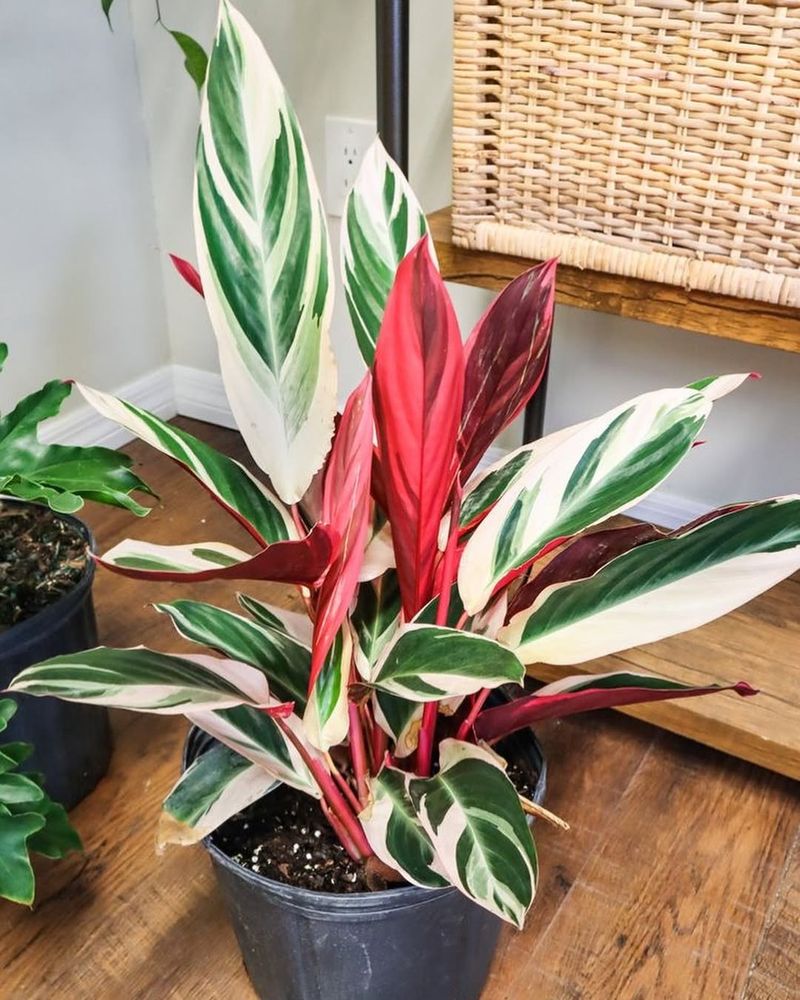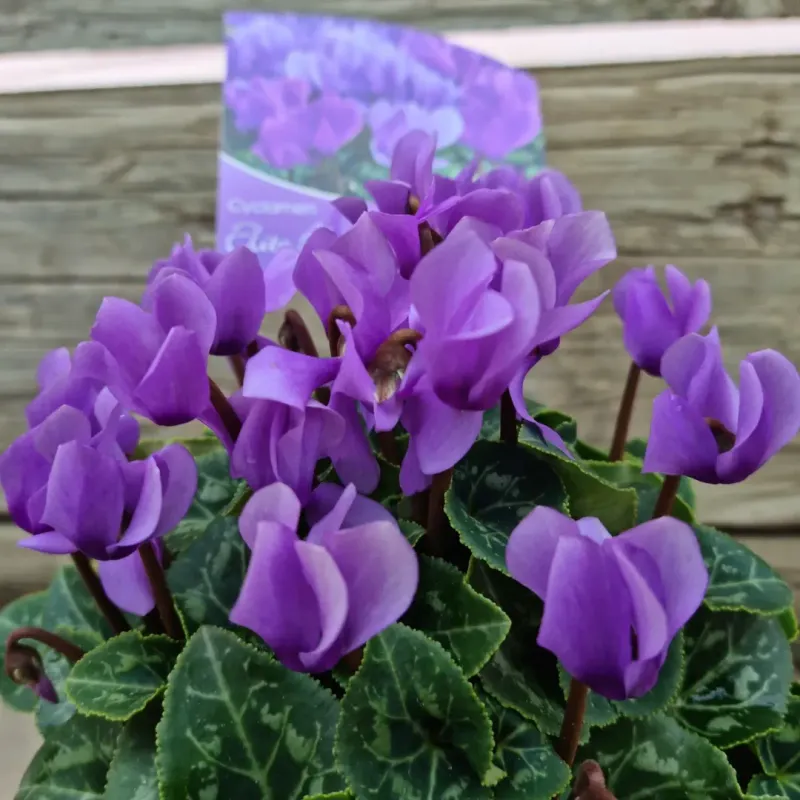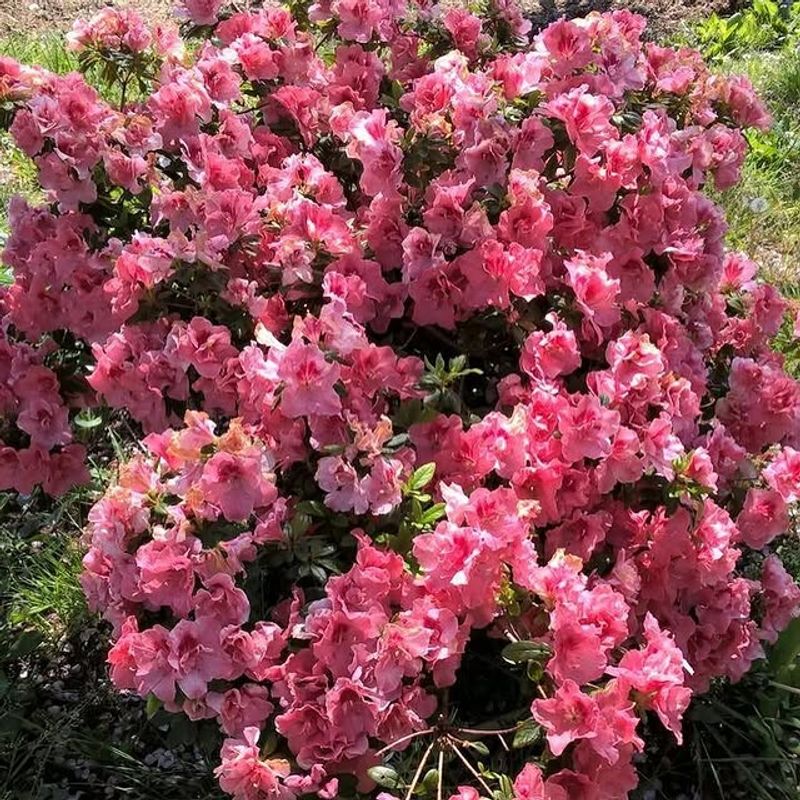Walking through a nursery, you might spot gorgeous plants with vibrant leaves and perfect blooms that seem like must-haves for your California home. But once you get them inside, many of these beauties start to wilt, turn brown, or simply give up.
California’s unique indoor conditions—dry air, intense sunlight, and varying temperatures—can be tough on certain plants that thrive in greenhouses but struggle in real homes.
1. Maidenhair Fern
Maidenhair ferns look like something from a fairy tale with their delicate, lacy leaves that seem to float on thin black stems. They absolutely love humidity and consistent moisture, which makes them a nightmare for most California homes.
Your indoor air is probably too dry, and if you forget to water even once, those pretty fronds turn crispy brown. They also hate direct sunlight and need filtered light, which can be tricky to provide. Unless you have a bathroom with perfect conditions, this fern will likely disappoint you quickly.
2. Calathea
With stunning patterns and colors that look hand-painted, Calatheas are absolute showstoppers at the nursery. But bringing one home often leads to heartbreak because they’re extremely picky about their environment.
California’s dry indoor air causes their leaf edges to turn brown and crispy almost immediately. They need high humidity, distilled water, and just the right amount of indirect light. Temperature fluctuations stress them out, and they’ll let you know by curling their leaves or developing brown spots that ruin their beauty.
3. Gardenia
Those creamy white flowers smell absolutely incredible, and gardenias look perfect sitting on the store shelf with their glossy green leaves. However, they’re notoriously difficult indoors because they demand very specific conditions to stay happy.
They need bright light but not direct sun, high humidity, acidic soil, and consistent watering. California homes rarely provide all of this naturally. The buds often drop before opening, leaves yellow quickly, and the plant becomes a magnet for pests like spider mites and aphids when stressed.
4. Croton
Crotons burst with bold colors—reds, oranges, yellows, and greens all swirled together on thick, waxy leaves. They practically beg you to take them home from the garden center.
Once indoors, though, they start dropping leaves like crazy if conditions aren’t perfect. They need very bright light to keep their colors, and California’s dry air stresses them out. They’re also drama queens about watering—too much or too little causes leaf drop. Temperature changes make them unhappy, and they’ll quickly lose their vibrant appeal.
5. Boston Fern
Boston ferns create beautiful cascades of soft, feathery fronds that look amazing in hanging baskets at the store. They seem like the perfect addition to brighten up any corner of your home.
Reality hits when you realize they need constant moisture and high humidity to survive. California’s indoor air is usually too dry, causing the fronds to turn brown and drop leaflets everywhere. Missing even one watering session can spell disaster. They also prefer cooler temperatures and indirect light, which can be challenging to maintain consistently indoors.
6. Polka Dot Plant
These cheerful little plants have leaves covered in pink, red, or white spots that make them irresistible impulse buys. They look compact and adorable on the shelf, promising to add a pop of color anywhere.
Unfortunately, they grow leggy and lose their compact shape incredibly fast indoors. They need frequent pinching to stay bushy, bright indirect light, and consistent moisture. California’s dry air causes their leaves to fade and drop. They’re also short-lived plants that often look scraggly within weeks, losing all that initial charm.
7. Nerve Plant
Nerve plants feature intricate vein patterns in pink, white, or red against deep green leaves, creating a stunning mosaic effect. They’re small, cute, and seem like perfect desk plants when you spot them.
But they’re incredibly dramatic about water and humidity. Let the soil dry out even slightly, and they collapse completely, looking dead within hours. While they usually recover after watering, this constant stress weakens them. California’s dry indoor conditions make it nearly impossible to keep them consistently happy, and they’re prone to becoming leggy and losing their compact beauty.
8. Zebra Plant
Zebra plants command attention with their bold white stripes against dark green leaves and occasional bright yellow flower spikes. They look exotic and special, making them tempting purchases at the nursery.
Keeping them alive is another story entirely. They demand high humidity, consistent moisture, bright indirect light, and warmth. California homes rarely provide all these conditions naturally. The leaves quickly develop brown edges and tips in dry air. They’re also prone to dropping leaves when stressed, and getting them to rebloom is extremely challenging indoors.
9. Prayer Plant
Prayer plants fold their patterned leaves upward at night like hands in prayer, which is fascinating to watch. Their oval leaves display beautiful patterns with red veins and light green markings that catch everyone’s eye.
They’re sensitive to California’s dry indoor air, which causes brown leaf edges and fading colors. They need filtered light, consistent moisture, and humidity to thrive. Tap water with chemicals can cause brown spots on leaves. They’re also slow growers indoors and can look scraggly if conditions aren’t perfect, losing that full, healthy appearance they had at purchase.
10. African Violet
African violets produce charming clusters of purple, pink, or white flowers above fuzzy leaves, looking absolutely adorable on store shelves. They seem like they’d be easy to keep blooming on a windowsill.
Getting them to rebloom indoors is notoriously difficult. They need very specific light conditions—bright but not direct. Water on their fuzzy leaves causes ugly brown spots. They prefer bottom watering, high humidity, and consistent temperatures. California’s dry air and variable indoor conditions often result in plants that survive but never bloom again, becoming just plain green foliage.
11. Begonia
Begonias come in countless varieties with stunning leaf patterns or beautiful flowers that make them garden center favorites. Their diversity and beauty make it hard to resist bringing one home.
Many types struggle indoors because they’re prone to powdery mildew in stagnant air and root rot from overwatering. They need bright indirect light, good air circulation, and careful watering. California’s dry air can stress them, but too much humidity without airflow causes fungal issues. Leaves often develop brown edges, flowers drop quickly, and plants become leggy or diseased without perfect conditions.
12. Stromanthe Triostar
This stunning plant displays leaves painted in green, cream, and bright pink, with purple undersides that create a spectacular show. It’s one of the most eye-catching plants you’ll find at any nursery.
Sadly, it’s also one of the fussiest. Like its Calathea cousins, it demands high humidity and hates dry California indoor air. Leaf edges brown quickly, colors fade without proper light, and it’s sensitive to water quality. Tap water chemicals cause leaf damage. The plant needs consistent moisture, warmth, and filtered light. Most homes can’t provide these conditions naturally, leading to rapid decline.
13. Cyclamen
Cyclamen produce unique butterfly-like flowers in pink, red, white, or purple that seem to hover above marbled heart-shaped leaves. They’re popular during holidays and look absolutely enchanting in stores.
They’re actually cool-season plants that prefer temperatures around 60 degrees, which is cooler than most California homes. Warm indoor temperatures cause them to go dormant quickly, with flowers fading and leaves yellowing. They need bright light, cool conditions, and careful watering. Most people watch their beautiful cyclamen decline within weeks of purchase, never to bloom again indoors.
14. Azalea
Indoor azaleas arrive at stores covered in gorgeous blooms—pink, red, white, or purple flowers that completely cover the plant. They look like they’ll provide weeks of indoor color and beauty.
Keeping them alive and blooming is extremely challenging indoors. They need acidic soil, cool temperatures, high humidity, and consistent moisture. California’s warm, dry homes cause flowers to drop quickly and leaves to brown. They’re really outdoor shrubs forced into bloom for temporary indoor display. After flowering, they rarely rebloom indoors and often decline rapidly despite your best efforts to care for them properly.

